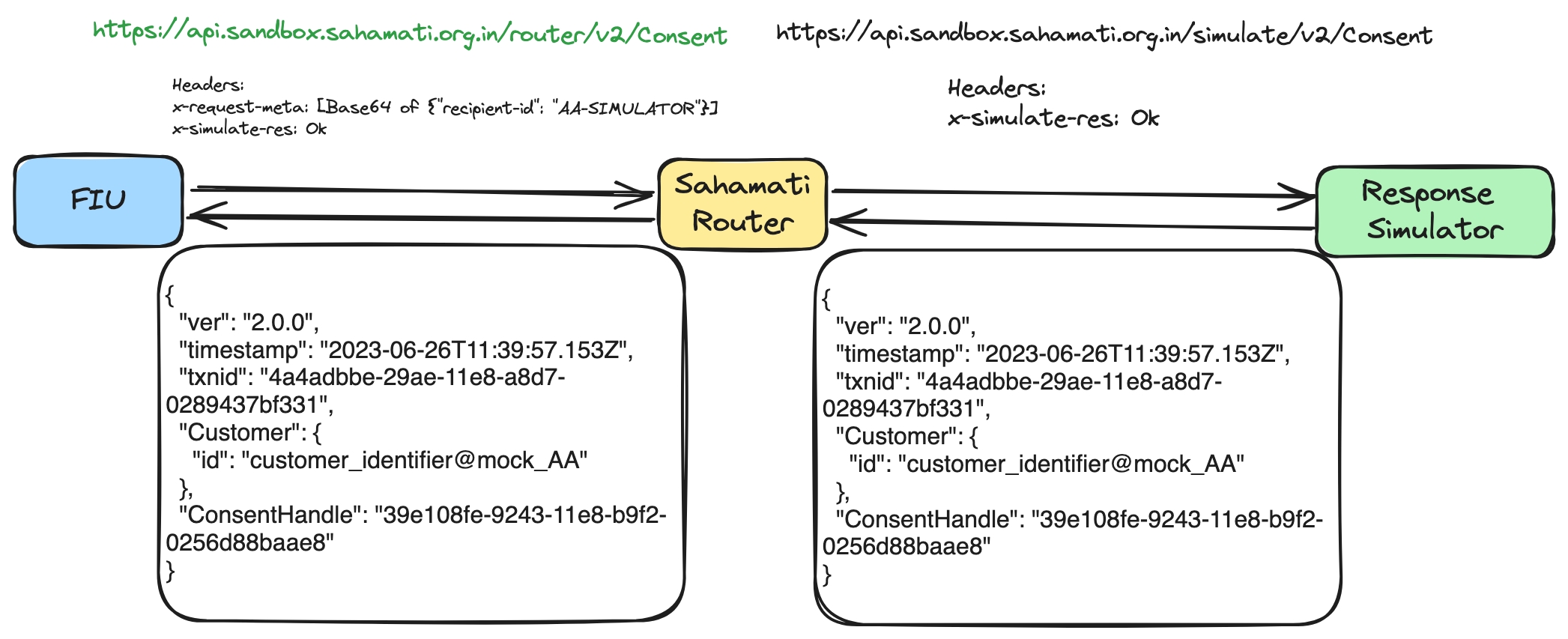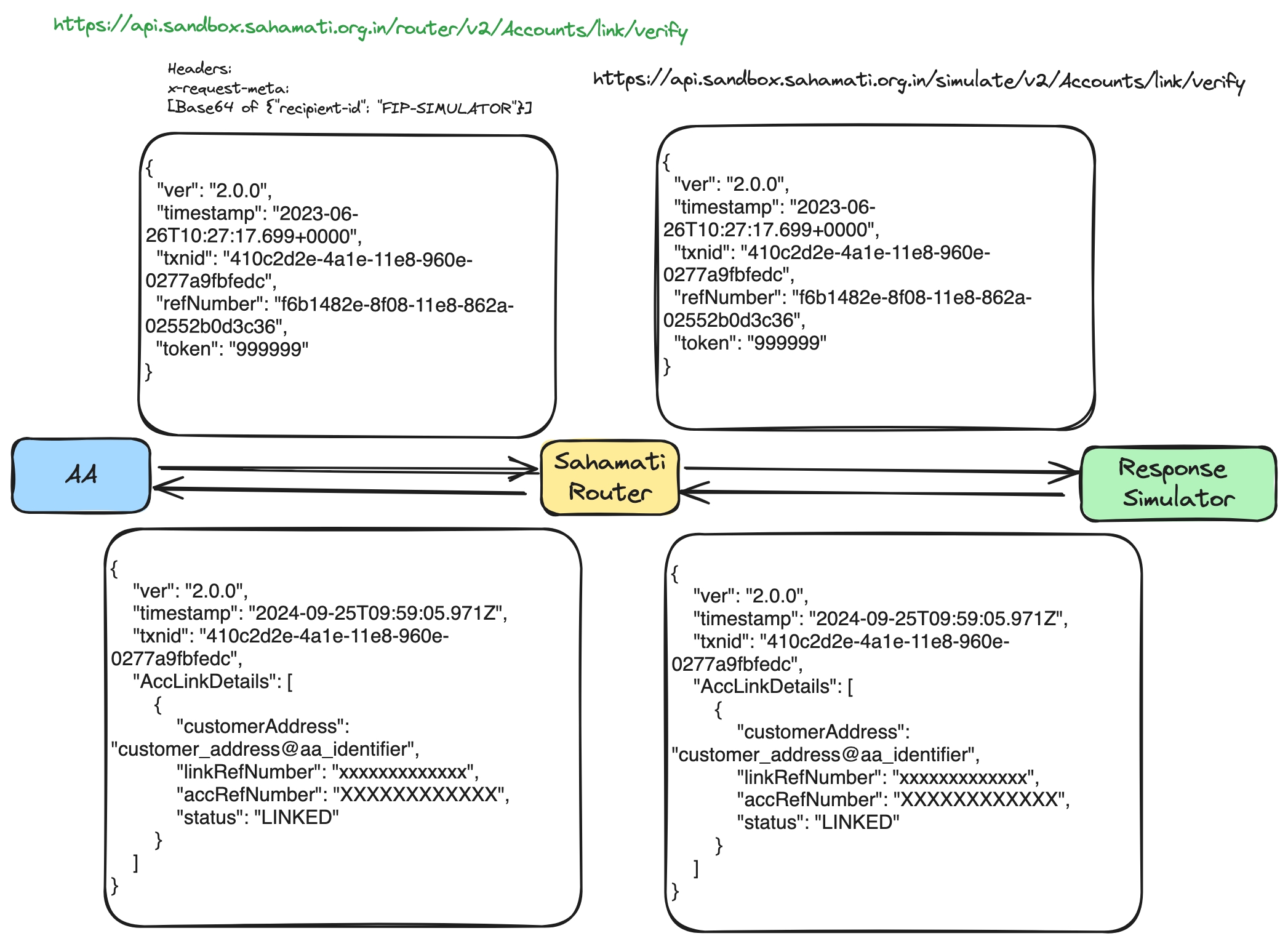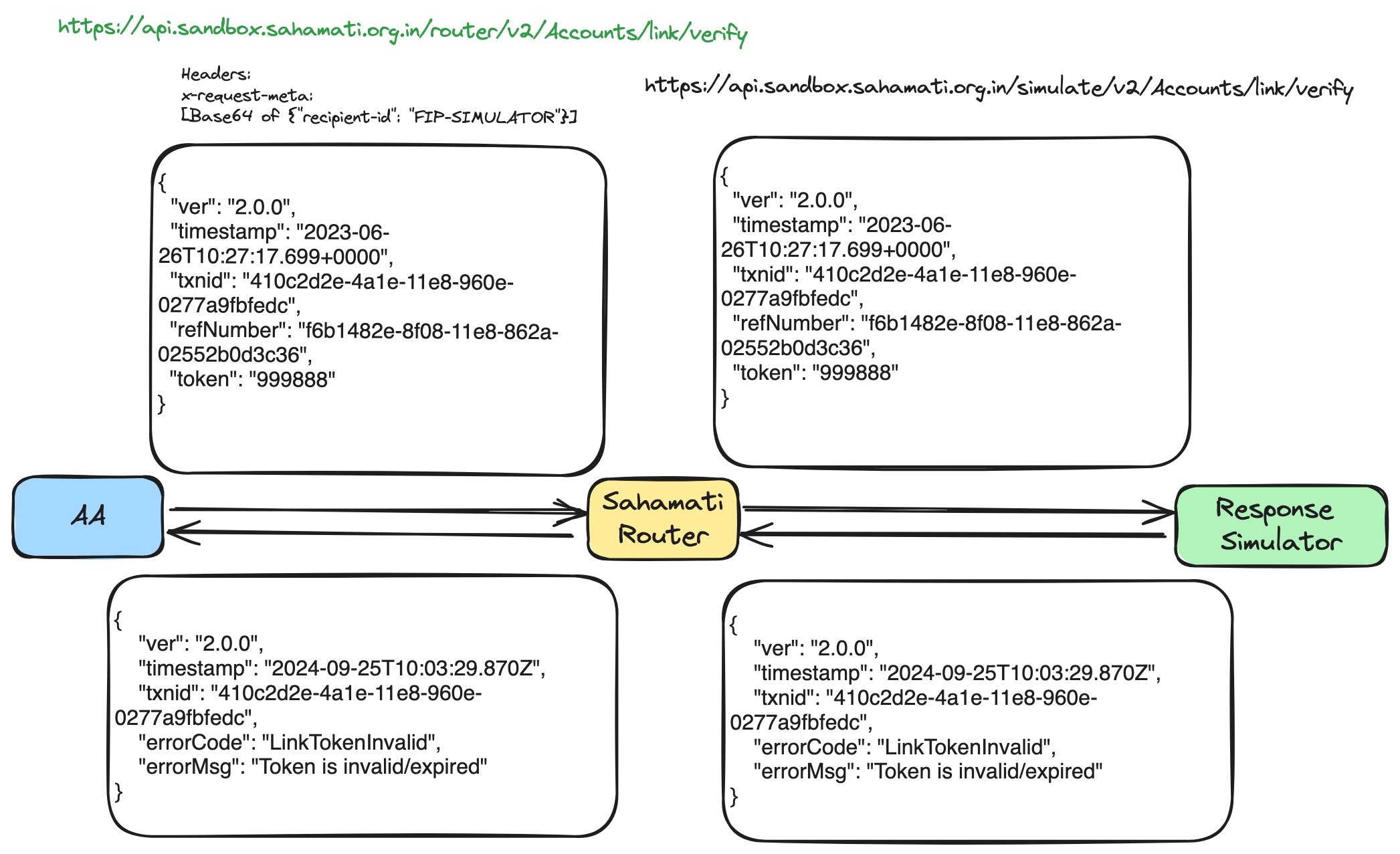Integration with Simulators
Overview
SahamatiNet has developed Response Simulators for each type of entity in the AA ecosystem. These simulators replicate the behaviour of AA, FIU, or FIP while interacting with ReBIT APIs for Router integration, enabling seamless testing and validation.
By mimicking real Entity Protocol APIs, the Response Simulator provides a controlled environment where developers can test the router service independently without relying on a live entity.
The sample workflow diagram below illustrates the usage of the Response Simulator by including a simulated response with the expected response.

The following two details are required in the request to use the APIs with Response Simulator:
recipient-id: This is specified in the x-request-meta header through which the router that will route the request to the respective response simulator.
Based on the respective use case you can use the following Entity ID as
recipient-id, which are mapped to the respective Response Simulators in Sandbox environment,AA-SIMULATOR
FIU-SIMULATOR and
FIP-SIMULATOR
x-simulate-res: This header should contain a hint for the expected response from the response simulator. It can be any of the options listed in the specific entity tables. If this is not included, the response simulator will default to returning a 200 OK response.
Sample Request Headers:
OTP Scenario:
The FIP's Accounts/link/verify API is the only one that utilizes the OTP received from the customer. This API is responsible for submitting the token/OTP back to the FIP to complete the account linkage process. The Response Simulator is set up to accept a predefined list of OTPs for successful account linkage. If an OTP outside of this list is used, the account linkage will fail. This is the default behavior of the Response Simulator, functioning without the need for the x-simulate-res header.
List of OTPs accepted by Response Simulator
1234
123456
654321
999999
223344
567890
456789
234567
345678
555444
222333
The sample workflow diagram below illustrates the usage of the valid OTP

The sample workflow diagram below illustrates the usage of the invalid OTP

Was this helpful?